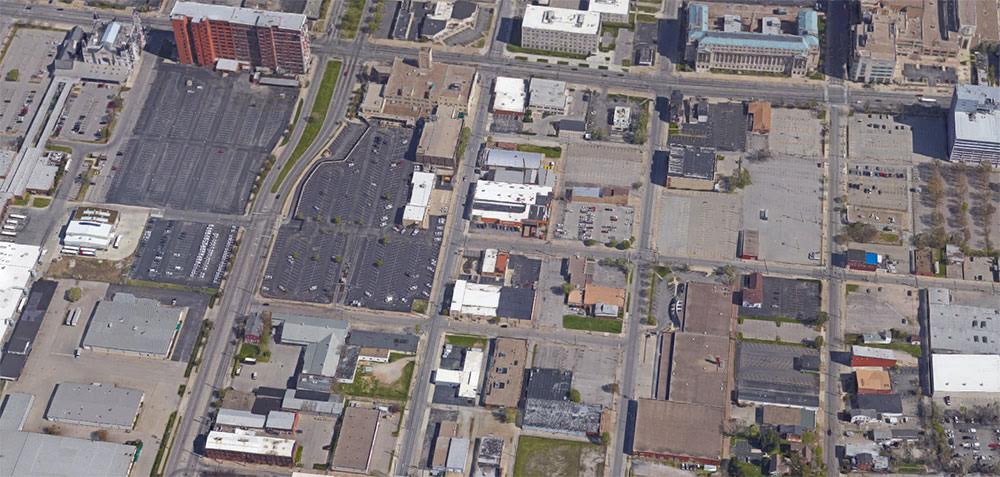Generally, parking is thought of as a transportation and urban design issue, involving tradeoffs between easing access to a place by car while potentially imposing greater social costs by discouraging other modes and, sometimes, degrading the pedestrian environment and spreading out neighborhoods and entire cities. There’s no shortage of parking craters nominated to compete in Streetsblog’s annual “Parking Madness” competition.
But increasingly, parking is also understood as a housing issue—in particular, because of the near-ubiquitous laws that require new housing developments to include off-street parking. Particularly in denser projects where that parking will be in a garage rather than a surface lot, those spaces can be quite costly. A report from the Chicago-based Center for Neighborhood Technology found that per-stall estimates run up to the tens of thousands of dollars—and given that many municipalities require one parking space per unit, or even one per bedroom, that means that a significant portion of the cost of new housing is often not about space for people, but for cars.

For obvious reasons, critics have linked that fact with rising home prices in many of the country’s most sought-after urban cores in making the case that parking minimums are an enemy of housing affordability. Seattle’s Sightline Institute estimates that parking requirements add about $200 a month to the cost of rental apartments–whether or not their tenants have cars.
It’s important to note that in many of these overheated markets, reducing the costs of parking in new buildings is unlikely to translate into a one-to-one reduction in the price of new housing. After all, the essence of the affordability crisis is that a shortage of supply has allowed prices to be bid up and disconnected from the cost of providing housing.
But parking costs help constrict supply and have important effects in other ways. For one thing, most Americans don’t live in one of the major American cities with severe housing shortages, and in those places parking requirements directly drive up housing prices. But even in a place like Los Angeles or Washington, DC, parking requirements can be a serious problem, taking up space that might otherwise go to more housing to ease the supply crunch. And parking minimums are especially pernicious for affordable housing developers. They reduce the number of below-market homes that can be built by increasing per-unit costs for nonprofit builders already scrambling to put together financing for their projects—ironically, for tenants who are even less likely to actually own cars.
Fortunately, awareness of the high cost of “free” parking, in the form of requirements is beginning to percolate into policy. In Portland, these sorts of issues are coming up at public meetings where local officials are considering changes to the city’s parking rules. As reported by BikePortland, affordability advocates convinced the City Council to pull a proposed ordinance that would have required parking garages in some large transit-oriented housing projects. Significantly, the higher parking requirements were opposed by local tenants advocacy groups, who made the connection to housing affordability. In Chicago, testimony from CNT and others about the high cost of parking requirements helped convince aldermen earlier this year to expand that city’s transit-oriented development zone—within which parking minimums fall by half or more—from a quarter mile to a half mile around rail stations.
Of course, municipal leaders will still feel the need to respond to constituent complaints that street parking is too scarce. But there are many more options than simply building more parking garages. After all, as Mike Andersen of BikePortland has pointed out, without a reason to prefer parking in garages, most people will continue to look for street parking as a first option—meaning that more garages are unlikely to solve the street parking issue.
What else might work? One possibility: tradeable, priced permits. Portland, in fact, is considering just such a plan, which would allow residential communities to create parking permits and sell them, calibrating the number and price to avoid competition and overuse of the available space. Perhaps even better—again, echoing Andersen—would be to make the permits tradeable, so that their prices could fluctuate based on changing demand. Essentially, this would be recreating the price-variable parking meter model we’ve written about earlier, in which prices change dynamically to ensure about 85% occupancy—enough that lots of people are actually using the space, but with enough vacancy to ensure that it’s not too hard to find a spot. And as Donald Shoup has recommended, providing discounted purchase prices for neighborhood residents can help address equity concerns.
The CNT report also mentions a number of other possibilities, including parking districts that treat spaces as a community resource, allowing, say, off-street parking behind a movie theater to be used as residential parking during off-peak hours, rather than insisting that every individual use have enough dedicated parking for its own peak period. Municipalities can also give credits for developers that encourage other modes of transportation, for example reducing parking minimums if developers provide tenants with transit passes, bike parking, or carsharing spaces.
It’s clear, though, that current parking requirements are causing more problems than they’re solving. Introducing better pricing, more flexible use, and encouraging other modes are likely to create benefits to both transportation and housing issues.

